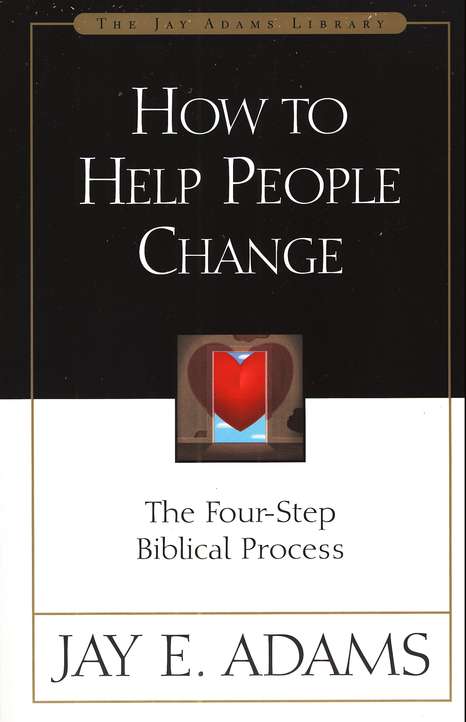How to Help People Change
a review by Kevin Binkley

How to Help People Change by Jay Adams is a book with a four step process to help Christians change by properly relaying counsel to each other. Adams, a well know Christian counselor, claims to be a "nouthetic" counselor. Nouthetic is the English equivalent for the Greek word "to confront" found in Bible passages like Romans 15:14: "I myself am convinced about you, my brothers, that you yourselves are full of goodness, filled with all knowledge, and competent to counsel one another." Nouthesia and its variations appear eleven times in the New Testament and can be translated as "admonish," "warn," "correct," "exhort," or "instruct." Adams emphasizes the meaning "confront" in the development of his counseling system, and this interpretation informs his counseling method.
Adams' abundant writing in the field of counseling tends to criticize modern counseling methods. He explains in the introduction that "... the proliferation of counseling and psychotherapeutic systems strongly evidence both confusion and conflict within psychological and psychiatric ranks." Adams admits, however, that the one thing everyone in the field agrees on is the desire to help people change. This book is Adams' attempt to equip the reader to help people change.
The book divides into 5 sections. In section 1 he defends his argument that any good and lasting change will have to come with a Biblical perspective. Adams teaches the bible as "... all that is necessary for a life of godliness." The book's remaining 4 sections detail the four steps to help people change, namely, 1) teaching, 2) conviction, 3) correction, and 4) disciplined training.
2 Timothy 3:14-17 is the basis for Adams 4 steps. The passage reminds us that the scriptures are able to make one wise for salvation, or, become a believer. Then as a believer, the verses contend that "All Scripture is inspired by God and is profitable for (1) teaching, for (2) rebuking (or convicting), for (3) correcting, and lastly (4) for training in righteousness, so that the man of God may be complete, equipped for every good work."
In the chapters that follow Adams breaks each of these components down individually. He contends that each step in the process must occur in the same order as the verses in 2 Timothy. That is to say, one must experience the teaching of the word of God before there will be conviction. Conviction is needed before there can be correcting, and correcting leads to training up in righteousness. Adams writes that teaching is the first level of helping people so that every aspect of helping is informed by truth. As people respond to truth, acknowledge their wrong, and embrace what is right, they are trained in righteousness. In the end, the person is changed, realizing the goal of counseling.
Adams admits being criticized for a system of belief that does not intend to bolster the counselee's self esteem. Critics might say, "God would never tell me the truth about me if it makes me feel worse about myself, would he? How will I obey God if I feel bad about my myself?" Adams responds, "We are unable to serve God faithfully until we recognize that we a nothing more than rebellious sinners in his sight."
Adams will likely be accused of being to simplistic with his gospel formula for helping people change. It is true that overlooking other life experiences that account for behavior might be narrow minded. But, we must never dismiss the "whole person" value of coming to terms with God's truth, owning my wrongs, and trusting in Christ to save me. Not just to change my destination from heaven to hell, but to change me as a person while I am on that journey.